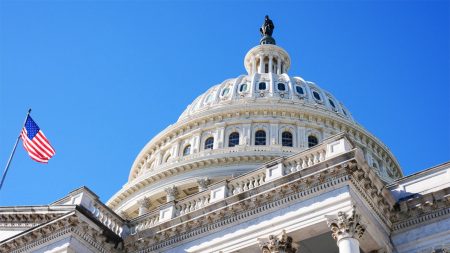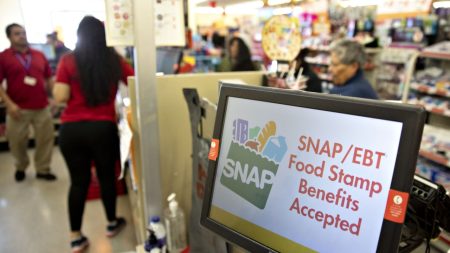China Takes Historic Step to Combat Fentanyl Crisis with New Export Controls
Beijing’s Decision Marks Significant Breakthrough in U.S.-China Cooperation on Drug Trafficking
In a landmark move that signals a potential warming in diplomatic relations between the world’s two largest economies, China has announced sweeping new restrictions on the export of 13 chemicals used in the production of fentanyl, the synthetic opioid devastating American communities. The decision, revealed by Chinese officials on Tuesday, represents one of the most concrete steps taken by Beijing to address what has become a central concern in U.S.-China relations and a driving force behind the deadly overdose epidemic claiming tens of thousands of American lives annually.
The new regulations, which will require exporters to obtain special government licenses before shipping these precursor chemicals overseas, target the complex supply chain that has allowed illicit fentanyl manufacturing to flourish. Under this framework, Chinese companies seeking to export these substances must now provide comprehensive documentation regarding both their foreign customers and the intended use of the chemicals. This represents a significant strengthening of oversight in a trade that has previously operated with minimal scrutiny, enabling criminal organizations to easily acquire the building blocks needed for fentanyl production. “This regulatory framework will substantially increase transparency in the chemical supply chain and create significant hurdles for those attempting to divert legitimate chemicals into illicit drug production networks,” explained Dr. Vanda Felbab-Brown, a senior fellow at the Brookings Institution specializing in international drug policy. “The requirement for end-user verification alone could disrupt many existing smuggling operations.”
The timing of this announcement carries particular diplomatic significance, coming just weeks before a potential meeting between President Biden and Chinese President Xi Jinping at the Asia-Pacific Economic Cooperation summit in San Francisco. For years, U.S. officials have identified fentanyl as a critical issue in bilateral relations, with frustration mounting over what many American policymakers perceived as Beijing’s reluctance to meaningfully address the flow of precursor chemicals from Chinese manufacturers to drug cartels, particularly those operating in Mexico. The synthetic opioid crisis has claimed over 70,000 American lives in the past year alone, according to preliminary CDC data, making it the deadliest drug crisis in U.S. history. “This represents a potential inflection point in how our nations approach a shared threat,” noted former DEA administrator Chuck Rosenberg. “Effective implementation of these controls could significantly disrupt the supply chains that fuel this epidemic.”
The Complex Web of Global Fentanyl Production and Its Deadly Impact
The fentanyl crisis represents an unprecedented challenge in global drug enforcement due to both the potency of the substance and the adaptability of its production methods. Unlike traditional plant-based narcotics such as heroin or cocaine, fentanyl is entirely synthetic, produced through chemical processes that can be rapidly modified to circumvent regulatory controls. This has created a lethal game of regulatory whack-a-mole, with manufacturers constantly adjusting formulations to stay ahead of international controls. Fentanyl’s devastating impact stems from its extraordinary potency—just two milligrams can prove fatal, making it approximately 50 times stronger than heroin and 100 times more potent than morphine. This extreme concentration not only makes the drug deadly for users but also creates enormous challenges for law enforcement, as traffickers can transport significant quantities in packages small enough to easily evade detection.
The global supply chain for illicit fentanyl has evolved significantly over the past decade. While China once served as the primary direct source of finished fentanyl entering the United States, enhanced scrutiny and previous enforcement efforts prompted a shift in trafficking patterns. Today, most illicit fentanyl enters the U.S. through the southern border, manufactured in clandestine laboratories in Mexico. However, the chemical precursors—the building blocks needed to synthesize the drug—have continued to flow predominantly from Chinese chemical manufacturers. These companies, operating in a regulatory gray area, have been able to legally produce and export these chemicals, which while having legitimate industrial applications, are increasingly diverted into illicit drug production. “What makes this problem so challenging is that many of these precursors have dual-use applications in legitimate industries,” explained Bryce Pardo, associate director of the RAND Drug Policy Research Center. “The same chemicals needed for fentanyl production may also be used in manufacturing pharmaceuticals, pesticides, or other industrial products, making it difficult to control their movement without disrupting legitimate commerce.”
The human toll of the fentanyl crisis extends far beyond statistics, infiltrating communities across America regardless of geography, socioeconomic status, or demographics. Increasingly, the drug appears in counterfeit prescription pills or mixed with other substances without users’ knowledge, leading to unexpected overdoses even among occasional drug users. In cities like Philadelphia, Baltimore, and San Francisco, public health officials report that fentanyl has overwhelmed treatment systems and transformed the nature of addiction services. Meanwhile, in rural communities across Appalachia and the Midwest, already struggling with economic challenges, the synthetic opioid has further strained limited public health resources. Families affected by fentanyl overdoses frequently report the shocking suddenness of loss—loved ones dying after a single use or relapse, with no opportunity for intervention or treatment. “The introduction of fentanyl into the drug supply has fundamentally changed the risk equation,” said Dr. Nora Volkow, Director of the National Institute on Drug Abuse. “Previous approaches to harm reduction and treatment must adapt to this new reality where the margin between use and fatal overdose has become perilously narrow.”
Diplomatic Breakthrough Amid Broader U.S.-China Tensions
China’s decision to implement these export controls comes against a backdrop of otherwise strained relations between Washington and Beijing. The move represents a rare area of cooperation amid escalating tensions over issues ranging from Taiwan and technology restrictions to human rights concerns and regional security in the South China Sea. For the Biden administration, securing Chinese cooperation on fentanyl has been a consistent diplomatic priority, raised repeatedly in high-level engagements including Secretary of State Antony Blinken’s visit to Beijing earlier this year. U.S. officials have long argued that addressing the fentanyl crisis requires a coordinated international response, with particular emphasis on cooperation from China given its central role in chemical manufacturing and export.
The announcement signals what some analysts describe as a pragmatic turn in Beijing’s approach to bilateral relations, recognizing areas where cooperation serves mutual interests despite broader strategic competition. Chinese officials had previously resisted American pressure on this issue, often characterizing the U.S. opioid crisis as primarily a domestic problem of demand rather than a supply issue requiring Chinese action. Some experts suggest the timing may reflect a strategic calculation by Chinese leadership that demonstrating cooperation on fentanyl could help ease tensions ahead of the anticipated meeting between Presidents Xi and Biden. “This represents classic Chinese diplomacy—identifying specific concessions that might improve the atmosphere for high-level dialogue without compromising on what Beijing considers core interests,” observed Bonnie Glaser, director of the Asia Program at the German Marshall Fund. The move also aligns with China’s desire to project itself as a responsible global stakeholder in international drug control efforts, particularly as it seeks greater influence in global governance institutions.
The practical impact of these new controls will depend significantly on implementation and enforcement. Previous regulatory efforts have sometimes fallen short due to limited resources allocated to monitoring compliance or loopholes that allowed chemical manufacturers to make minor modifications to controlled substances, creating analogues that achieved the same effect while technically falling outside regulatory frameworks. American officials have welcomed the announcement but emphasize that they will be closely monitoring its practical effects. “The true test will be whether we see a measurable reduction in precursor chemicals reaching drug trafficking organizations,” stated Anne Milgram, Administrator of the Drug Enforcement Administration, following the announcement. “We remain cautiously optimistic that this represents a genuine commitment rather than a symbolic gesture.”
Challenges and Opportunities in Addressing the Global Fentanyl Trade
While the new export controls represent a significant step forward, experts caution that they alone will not resolve the fentanyl crisis. Criminal organizations have demonstrated remarkable adaptability in response to previous enforcement efforts, rapidly developing alternative supply chains, new synthesis methods, or substitute chemicals when faced with disruptions. Mexican cartels, in particular, have invested heavily in developing their chemical expertise, potentially enabling them to source precursors from alternative suppliers or develop new production methods that circumvent the newly controlled substances. Additionally, the globalized nature of the chemical industry means that manufacturers in other countries with less robust regulatory systems could step in to fill any gap left by tightened Chinese controls.
The multifaceted nature of the crisis underscores the need for a comprehensive approach that addresses both supply and demand factors. Within the United States, public health experts continue to advocate for expanded access to treatment programs, widespread distribution of overdose-reversing medications like naloxone, and greater investment in prevention strategies. Law enforcement agencies emphasize the importance of disrupting trafficking networks and targeting the financial infrastructure that sustains the illicit drug trade. “No single intervention—whether diplomatic, enforcement-focused, or treatment-oriented—will be sufficient on its own,” noted Regina LaBelle, former acting director of the Office of National Drug Control Policy. “Progress requires sustained commitment across multiple domains simultaneously.”
Despite these challenges, the Chinese announcement represents a potentially significant inflection point in international efforts to combat synthetic opioids. The inclusion of specific chemicals used to produce nitazenes—a class of synthetic opioids even more potent than fentanyl that has begun appearing in North American drug markets—suggests Chinese authorities are taking a forward-looking approach rather than merely responding to past concerns. Furthermore, the diplomatic breakthrough may create momentum for enhanced cooperation on other aspects of drug enforcement, including information sharing, joint investigations, and coordinated action against transnational criminal organizations. “While we shouldn’t expect these measures to immediately solve the crisis, they represent an important step toward the kind of international coordination that will ultimately be necessary to address synthetic drugs in the 21st century,” concluded Dr. Felbab-Brown. “The chemical expertise, manufacturing capacity, and global trade networks that make these substances so dangerous also create points of vulnerability that effective regulation can target.”
As families across America continue to bear the devastating impact of the fentanyl epidemic, this diplomatic development offers a rare glimmer of hope that international cooperation might help stem the tide of a crisis that has already claimed hundreds of thousands of lives. The true measure of success will be whether this regulatory change translates into fewer deadly chemicals reaching clandestine laboratories and, ultimately, fewer lives lost to synthetic opioids on American streets.









